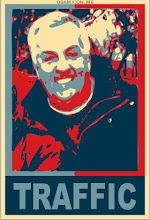Column: Roundabout overload coming dangerously close

reprinted from The Topeka Capital-Journal
American traffic engineers are ga-ga over roundabouts, which means circular intersections will become increasingly common on our streets and highways. As is the case anytime public dollars are thrown at a trendy idea, taxpayers need to keep an eyebrow raised.
This isn’t a distant phenomenon. Even Topeka has manifested early symptoms of roundabout fever. Since the beginning of the decade, several roundabouts have been built in the area, and more are planned. For example, Shawnee County commissioners approved a project late last year that would construct a roundabout at N.W. 46th and Oakley. That is no big deal — except this particular roundabout will be built one block east of a circular intersection at N.W. 46th and US-75 highway.
This is what has happened throughout the United Kingdom, where roundabouts are more common than pubs. Left unchecked, roundabouts multiply until a road literally becomes short stretches of pavement linking traffic circles.
When this occurs, the automobile becomes an inefficient mode of transportation. It’s not unusual for a highway trip in England to average less than 40 mph, largely because drivers are forced, again and again, to reduce their speed to about 20 mph — sometimes in the middle of a freeway — in order to negotiate a roundabout.
On divided British highways, roundabouts commonly replace ramped exits. This is traffic engineering at its worst.
The inefficiency of the roundabout as an intersection design really comes into focus when a driver wants to keep going straight but has to slow down to enter the circle, then take the exit where his road continues.
Deployed sparingly and far from other circular intersections, the roundabout has several things going for it, which explains traffic engineers’ enthusiasm for the concept. Depending on the project, a roundabout is often less expensive to build than a traditional intersection regulated by a traffic signal.
Problems arise, though, when traffic at a roundabout becomes so heavy that lights must be installed to allow vehicles into and out of the circle.
Another benefit of roundabouts is they often can handle more vehicles in an hour than a traditional intersection. Again, however, if traffic volume exceeds the design of the intersection, cars will be backed up trying to enter the circle.
The best and most compelling reason to build roundabouts is that they slow traffic to the point that casualties from intersection crashes drop dramatically. Now, that’s difficult to argue with.
The key, then, is for the governments that fund these projects to make sure the roundabouts can handle growth in traffic and to use common sense in deciding their location. The public also has an interest in efficient transportation.
Roundabouts should continue to be the exception rather than the rule.
Gwyn Mellinger is the chairwoman of the department of communications and mass media at Baker University. She is teaching this semester at Harlaxton College near Grantham, England, and can be reached at gwyn.mellinger@bakeru.edu.



